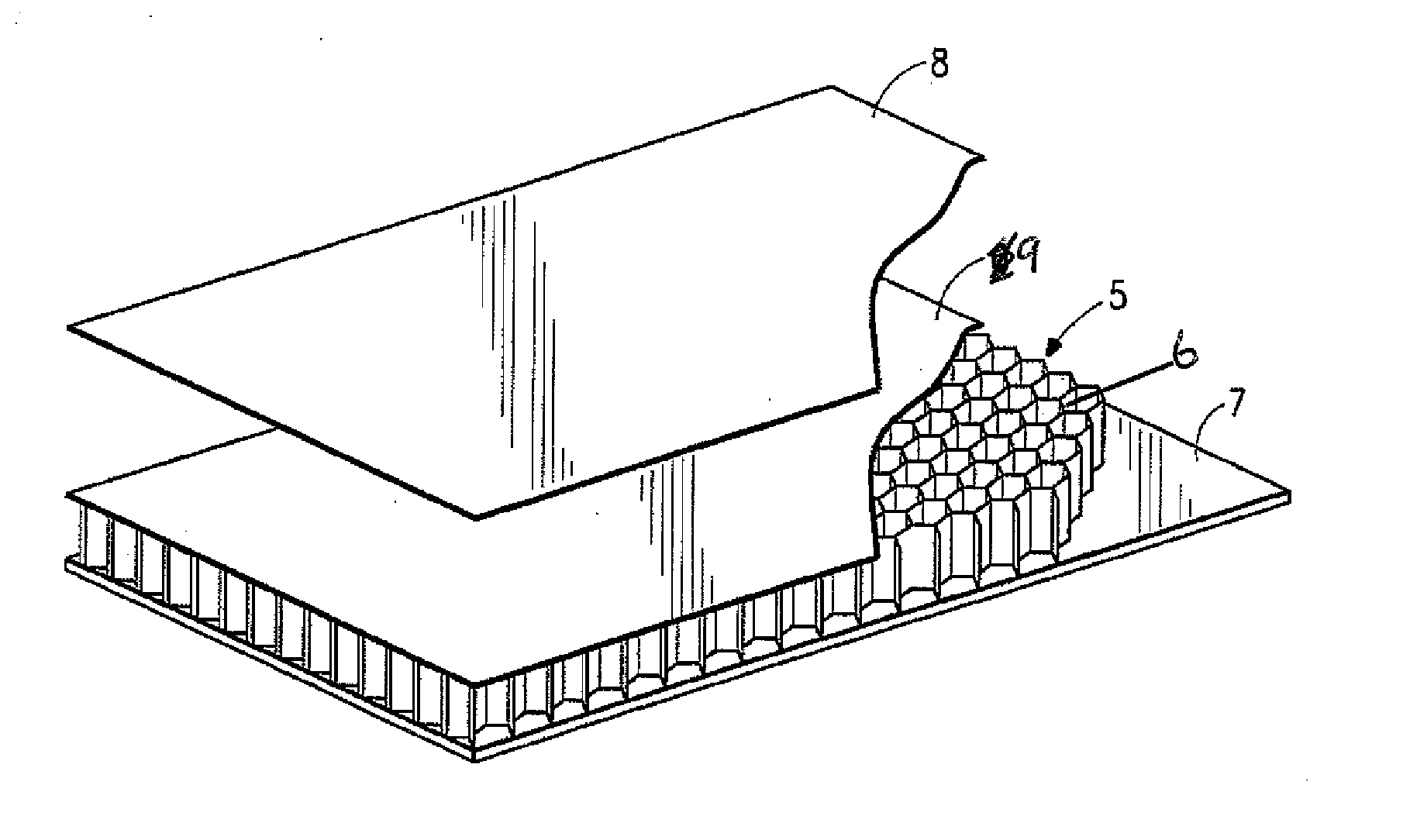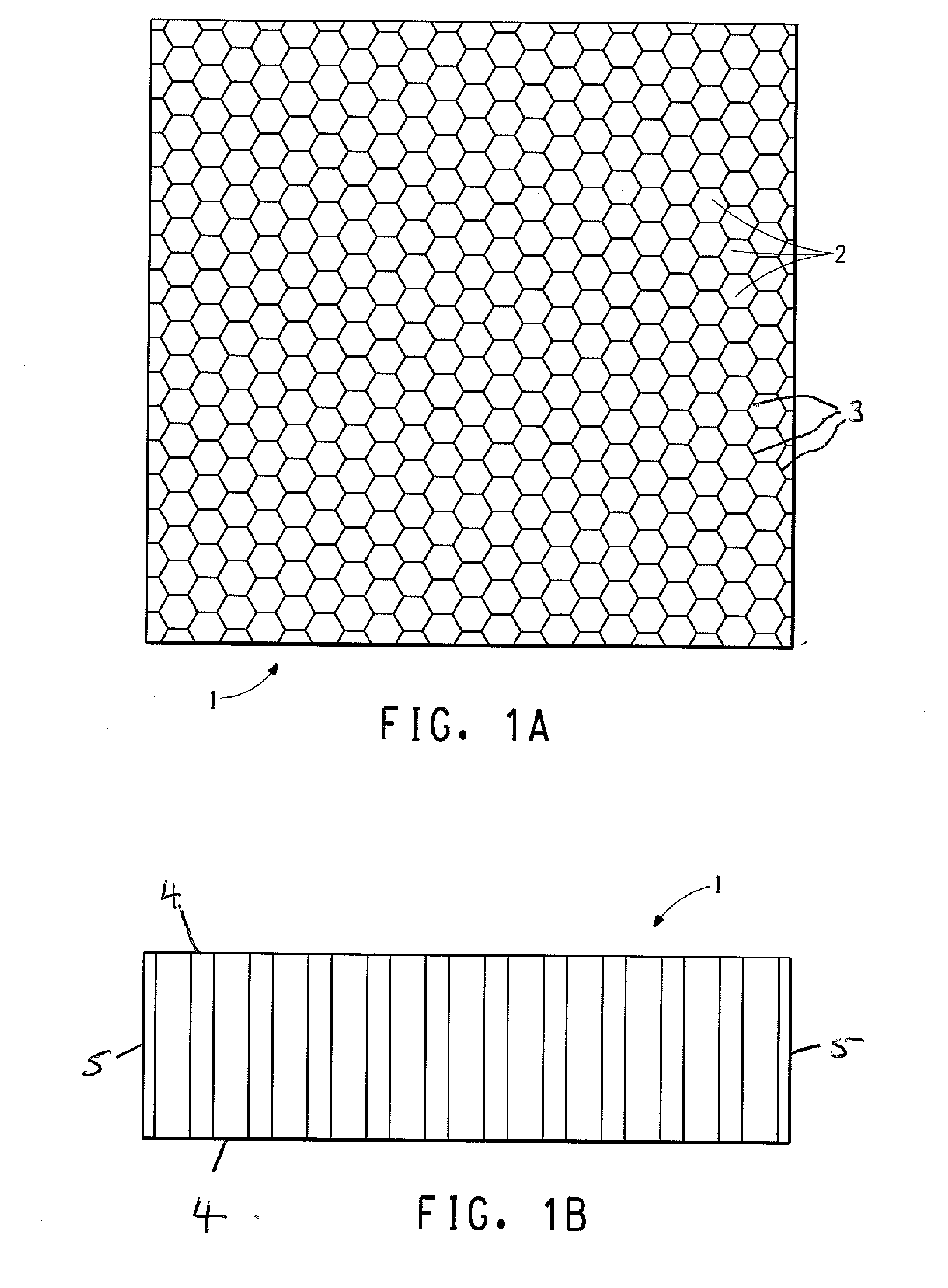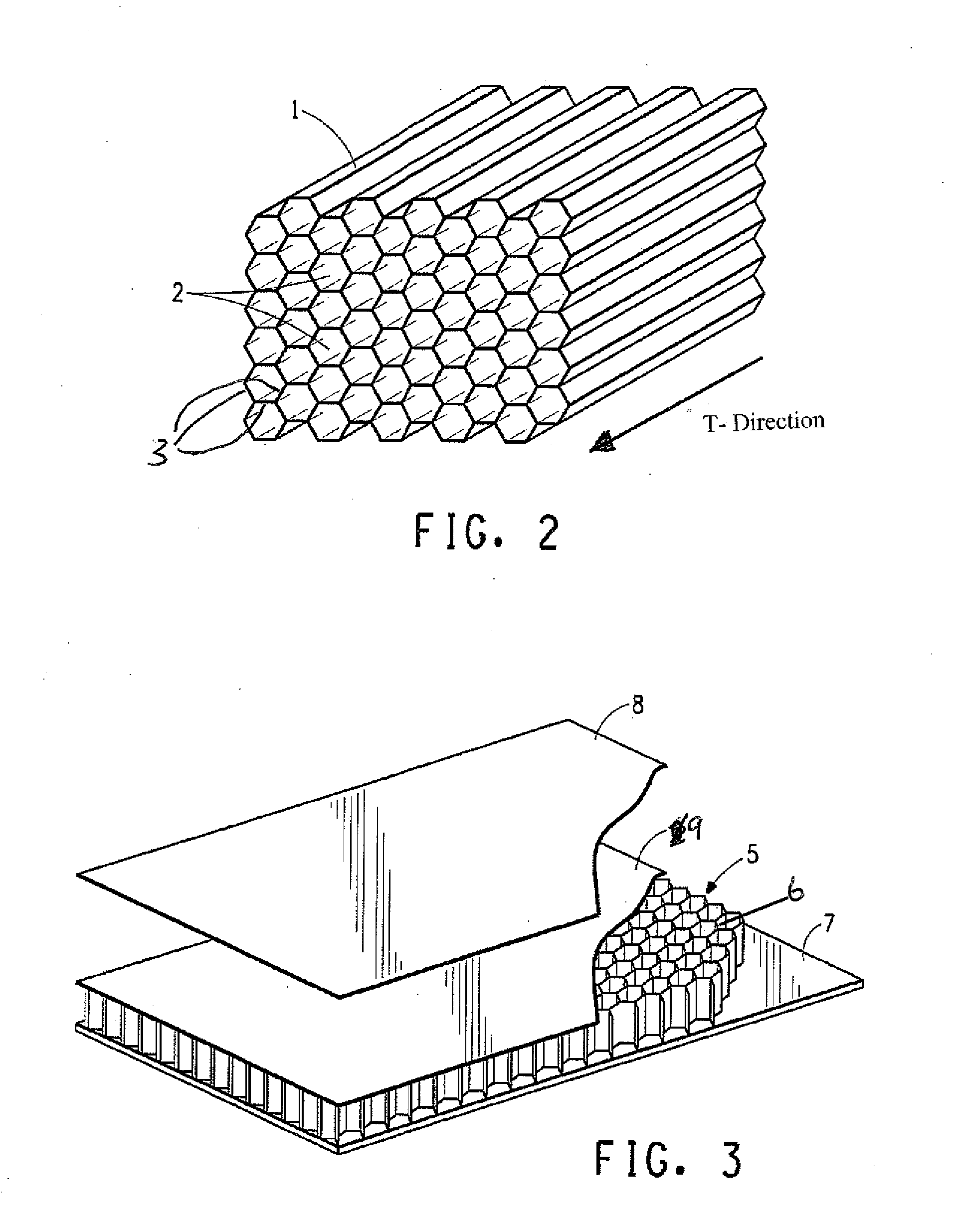Honeycomb core based on carbon fiber paper and articles made from same
- Summary
- Abstract
- Description
- Claims
- Application Information
AI Technical Summary
Problems solved by technology
Method used
Image
Examples
example 1
[0049]A paper comprising carbon floc, p-aramid floc, p-aramid pulp, and m-aramid fibrids is formed on conventional paper forming equipment. The composition of the paper is 40 weight percent carbon fiber floc, 15 weight percent p-aramid floc, 30 weight percent of p-aramid pulp, and 15 weight percent m-aramid fibrids.
[0050]The carbon floc has a nominal filament linear density of 0.70 dtex per filament (0.62 denier per filament), a cross sectional aspect ratio of 3:1, a cut length of 3.2 mm, a tenacity of 24.1 grams per dtex (1.92 N / tex), and an initial modulus of 1889 grams per dtex (150 N / tex).
[0051]The p-aramid floc has a nominal filament linear density of 1.7 dtex per filament (1.5 denier per filament), a cut length of 6.4 mm, a tenacity of 26.8 grams per dtex (2.13 N / tex), and initial modulus of 1044 grams per dtex (83 N / tex).
[0052]The p-aramid pulp is produced from the described p-aramid floc by high shear refining to a Canadian Standard Freeness (CSF) of about 180 ml. The meta-a...
example 2
[0061]Two prepreg facesheets are placed on either side of a 10 mm thick slice of honeycomb from Example 1. The prepreg is 8552 epoxy resin on G0803 style carbon fiber fabric available from Hexcel Corporation, Dublin, Calif. The resin content in the prepreg is 35%. A release layer is placed on both outer surfaces of the prepreg and the prepreg—honeycomb assembly cured in a press at 180° C. for 120 minutes to produce a sandwich panel.
PUM
| Property | Measurement | Unit |
|---|---|---|
| Length | aaaaa | aaaaa |
| Length | aaaaa | aaaaa |
| Fraction | aaaaa | aaaaa |
Abstract
Description
Claims
Application Information
 Login to View More
Login to View More - R&D
- Intellectual Property
- Life Sciences
- Materials
- Tech Scout
- Unparalleled Data Quality
- Higher Quality Content
- 60% Fewer Hallucinations
Browse by: Latest US Patents, China's latest patents, Technical Efficacy Thesaurus, Application Domain, Technology Topic, Popular Technical Reports.
© 2025 PatSnap. All rights reserved.Legal|Privacy policy|Modern Slavery Act Transparency Statement|Sitemap|About US| Contact US: help@patsnap.com



